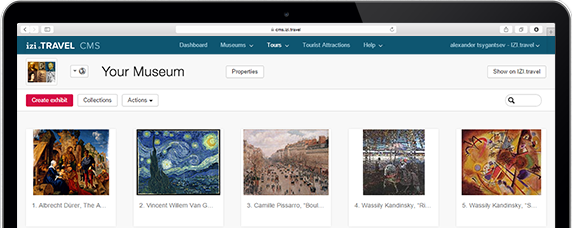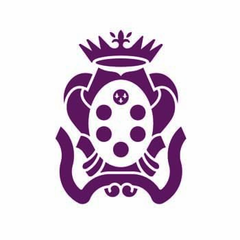Музей EN
- Download the applinks
- iOS
- Android
- Windows Phone
Информация о музее
О музее
Welcome to the Museum of the Opificio delle Pietre Dure
The texts of this audioguide were written by Annalisa Innocenti and translated by Paolo Belluzzo.
The voices of this audioguide are those of Paolo Belluzzo and Anna Marie Hilling.
The audioguide has been produced by the Cultural Promotion Office of the Opificio.
The Institute
The Opificio delle Pietre Dure, nowadays a Central Institute of the Ministry of Cultural Heritage, better known by the acronym “OPD”, was born in 1975 by merging two pre-existing structures: the ancient and renowned Opificio (established in 1588 as a grand duchy court workshop and turned into a restoration institute at the end of the nineteenth century) and the Restoration Laboratory of the Florentine Superintendency (founded in 1932 and transferred to the Fortezza da Basso in Florence after the flood that devastated the city in 1966).
The ancient Opificio was founded by Ferdinando I de’ Medici as an art workshop, specialized in the production of items made with hard stones. At first, the workshop was placed at the Uffizi, in the so-called “Work Gallery”. At the end of the eighteenth century, with the aim of creating a modern State, also by reorganizing its artistic collections, the grand duke Peter Leopold Lorraine transferred the Opificio to these premises in Via degli Alfani, previously part of the ancient San Niccolò convent, which had been suppressed by the grand duke.
The activity of the workshop continued under the Lorraine dynasty, with the decoration of the so-called Chapel of the Princes in the church of San Lorenzo, Florence, and with the production of magnificent works of art made with hard semiprecious stones, destined to decorate the grand duchy palaces and to be given as gifts to the greatest royal dynasties of Europe.
With the end of the Grand duchy of Tuscany and the birth of the Kingdom of Italy, the main patronage of the Opificio was lost, thus risking its closure. Thanks to Edoardo Marchionni, then director of the Opificio, this was avoided, by converging the activity of the institute to the field of restoration of works of art.
The nowadays world-wide known modern Opificio continues its activity in three main fields: conservation, with its eleven highly specialized Restoration Departments; pure and applied research, with the help of its Scientific Laboratory; education, with its Higher Education School, one of the three Italian state restoration schools.
The Opificio has three sites in the city of Florence: the historical one in Via degli Alfani, the more recent one at the Fortezza da Basso and the so-called “Hall of the Banners”, on the very top of Palazzo Vecchio, the town hall of Florence, also restoring off-site and providing technical-scientific advices.
The Museum
The Museum of the Opificio was founded in 1882, following the declaration of its historical collections as inalienable assets. As previously said, the production of the workshop declined due to the loss of the grand duchy court, for centuries the one and only patron of the Opificio. For some years, the Opificio had to self-finance by exhibiting and selling many of its works of art in the so-called Exposition Rooms.
Edoardo Marchionni, director of the Institute between 1876 and 1923, strove to improve the exposition by restoring and showing what was suitable to enhance the collection of ancient objects. In 1891 the first catalogue of the Museum, edited by himself, was published. In 1905 the inventory of the works of art came into use and it’s still effective.
In the 1960s, limited renovations were carried out in the Museum: during that period, the exposition consisted of seven rooms at the first floor and two rooms at the second floor.
The current setup has been designed by the architect Adolfo Natalini in 1995. The arrangement of the artworks has been edited by Annamaria Giusti on chronological-thematic criteria.
The collection, coming from the extensive properties of the Medici and Lorraine families, clearly outlines the development of the artistic workshop founded by Ferdinando I de’ Medici within three centuries: in the first rooms the products of the Medici and Lorraine grand duchy are arranged; in the following rooms, renewed in the nineteenth century, you can find works of art of the post-unification period. The second floor has been devoted to the producing technique, with the display of many samples of different stones, workbenches, tools and samples of the production steps of inlays and carvings. It is thus possible to follow the whole process to obtain those masterpieces of the so-called “commesso” or “Florentine mosaic”, discovering the secrets of this fascinating episode of the Florentine artistic history.
Спланировать посещение


- Biblioteca dell'Opificio delle pietre dure, Via degli Alfani, Quartiere 1, Флоренция, Тоскана, 50112, Италия
-
- Сегодня:
- 09:00 - 17:00
- Пн
- 8:30 - 14:00
- Вт
- 8:30 - 14:00
- Ср
- 8:30 - 14:00
- Чт
- 8:30 - 14:00
- Пт
- 8:30 - 14:00
- Сб
- 8:30 - 14:00
- Вс
- Закрыто
- https://opificiodellepietredure.cultura.gov.it/
Экспонаты
Экспонаты с озвученной историей
-
SECTION I - The first grand dukes and the semiprecious stones
-
The Dying Alexander’s head
-
Portrait of Cosimo I de’ Medici
-
Two panels with birds on a branch
-
Panels with flower pots
-
Table with parrot
-
SECTION II. The Chapel of the Princes
-
Head of Cosimo I
-
Panel with Elijah and the Angel
-
Two panels with Tuscan landscapes
-
Panel with laurel and olive wreath
-
SECTION III. Hard stones flowers
-
SECTION IV. The last Medici
-
Bedroom stoup
-
Panel with the allegory of Fame
-
Table cabinet with landscapes
-
Cabinet with naturalistic mosaics
-
SECTION V. The hard stones workshop
-
Workbench for carving
-
Bench for the cutting of Florentine mosaics
-
Realization steps of a Florentine mosaic
-
The museum of the Opificio in the mid twentieth century: the revival of an ancient tradition
-
SECTION VI. The Lorraine period
-
Table with a wreath of roses and shells
-
Allegory of Air and Water by Giuseppe Zocchi
-
The Arts
-
Porphyry tabletop with musical instrument and wreath
-
Two Roman landscapes
-
Painting on stone
-
Scagliola
-
SECTION VIII. The Opificio in the Post-Unification Period
-
Table with flowers, fruits, birds and racemes
-
Statue portraying Cimabue, by Paolo Ricci
-
Statue portraying Dante, by Paolo Ricci
-
Jardinière
-
Frames with flowers
-
Four samples of wall panels
-
Tabletops
-
Liberated Italy
-
Vase with flowers and animals
Отзывы
Все аудиогиды в вашем смартфоне
Опубликуйте собственный аудиотур!
Используйте систему и мобильное приложение абсолютно бесплатно


